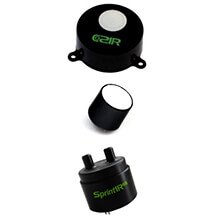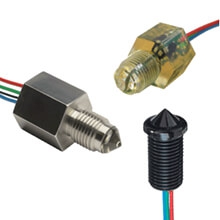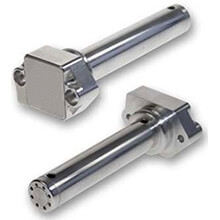- Contact 0870 350 7767
- |
- Advertise
How to get the most out of your Zirconium Dioxide Oxygen Sensor?
 News and PR from SST Sensing Ltd - Published 05 November 2018
This article gives an overview of helpful hints on how to pro-long the life of SSTís Zirconia Oxygen Sensors.
News and PR from SST Sensing Ltd - Published 05 November 2018
This article gives an overview of helpful hints on how to pro-long the life of SSTís Zirconia Oxygen Sensors.Fail Safe Operation and Sensor Asymmetry
One of the main benefits of the dynamic and active cell employed within the oxygen sensor is that it is inherently fail safe. The continual cycling and measuring of the generated Nernst voltage is effectively the heartbeat of the sensor, if this stops something fatal has occurred within the cell. This can very quickly be detected by the interface electronics
Refer to the Zirconia Sensor Operating Principle and Construction Guide for details.
Operating in Aggressive Humid Environments
When operating the zirconia oxygen sensors in warm, humid environments it is important the sensor remains at a higher temperature than its surroundings, especially if there are corrosive components in the measurement gas. During operation this is less of an issue as the heater operates at 700⁰C, however this means when the sensor or application is being powered down the sensor heater must be the last thing to be turned off after the temperature of the surroundings have suitably cooled. Ideally the sensor should be left powered or at a lower standby voltage (2V typically) at all times in very humid environments.
Failure to adhere to these rules will result in condensation forming on the heater and sensing element. When the sensor is re-powered the condensation will evaporate, leaving behind corrosive salts which very quickly destroy the heater and sensing element as illustrated in the image to the left. Note how the sensor’s external metalwork looks completely normal.
Protecting from Excessive Moisture
In environments where excessive moisture or falling water droplets are likely, the sensor should be protected from water reaching or falling directly onto the very hot sensor cap as this can cause massive temperature shocks to the cell and heater. Popular methods include a hood over the sensor cap or for the sensor to be mounted in a larger diameter cylinder.
At a very minimum the sensor cap should be angled downwards in the application as this will deflect any falling moisture and prevent the sensor cap from filling with water.
Using the Sensor with Silicone
Zirconia oxygen sensors are damaged by the presence of silicone in the measurement gas. Vapours (organic silicone compounds) of RTV rubbers and sealants are the main culprits and are widely used in many applications. These materials are often made with cheaper silicones, that when heated still outgas silicone vapours into the surrounding atmosphere. When these vapours reach the sensor, the organic part of the sensor will be burned at hot sensor parts, leaving behind a very fine divided Silicon Dioxide (SiO₂). This SiO₂ completely blocks the pores and activ
Other announcements from SST Sensing Ltd
-
Optical Oxygen Sensor Compared to Conventional Oxygen Sensors
What are the key benefits and applications?
09 Apr 2019
-
Choosing Between a Point Level Switch or Continuous Level Sensor
4 Factors to Consider when Choosing Between a Point Level Switch or Continuous Level Sensor
09 Apr 2019
-
Boiler Efficiency Ė How to Improve with SSTís Oxygen Gas Sensors
This blog post will show how flue gas sensors can improve boiler efficiency while exploring some of the products available from SST Sensing that are capable of optimizing combustion processes...
09 Apr 2019
-
Level Switch Ė Common Applications and What are they used for?
Optical Level Switch - Common Applications and What are they used for?
05 Nov 2018
-
SST Launch Range of Low Power, High Speed CO2 Sensors
SST is delighted to announce their launch of market leading CO2 Sensors that integrate unique mid infra-red light source and detector technology into innovative optics and signal processing.
05 Nov 2018
-
What is a Zirconium Dioxide Oxygen Sensor?
The zirconium dioxide oxygen sensor does not measure oxygen concentration %, but rather it measures partial pressure of oxygen in a gas or mixture of gases.
05 Nov 2018
-
Things to Consider When Selecting Fluid Level Sensors from SST
Optical fluid level sensors do not measure the liquid level, instead they detect the presence or absence of liquid.
05 Nov 2018
-
What Gases and Chemicals to Avoid
What Gases and Chemicals to Avoid When Using SSTís Zirconia Dioxide Oxygen Sensors
05 Nov 2018
-
7 Main Types of Level Sensing Methods - How do they differ?
Liquid level sensors have been around for decades, in markets such as food and beverage, industrial, medical and domestic, printing, agriculture, automotive and white goods...
05 Nov 2018












